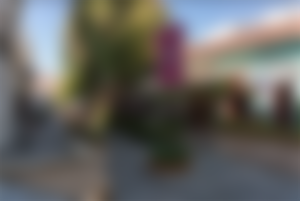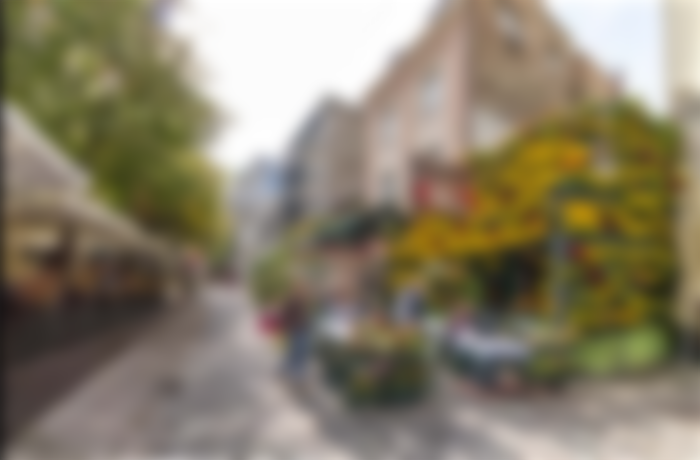
Skadarlija. The winding street with the spirit of old times floats, and the accumulated footsteps of bohemians, actors and poets who party until late at night still resound loudly on the cobblestones in the center of century-old Belgrade. Skadarska Street, full of famous taverns, remains a symbol of the city at the confluence of two rivers. The small treasury of dreams, which is visited by 20,000 people every day, is an unavoidable destination for every visitor to the city who wants to absorb the scents of ancient times and turn back the clock.
However, the legend of Skadarlija owes its huge role in the history of Belgrade to a modest beginning, a game of chance and the industrial progress of the city.
The first citizen of Belgrade and the beginning of the creation of a legend

The first houses in Skadarlija were built around 1717. Around the middle of the 19th century, this area was known as Šićan-mala, a Roma settlement with as many as 14 houses, and only in 1872 did it get its current name - Skadarska Street.
At that time, Bibija's stream flowed down a steep alley that springs near the Politika building (an old newspaper house in Belgrade). Potočić was named after the Roma deity of salvation Bibija, and today he was redirected to the drainage system. The street was also connected to the aqueduct whose largest arch was named after the city of Shkodra, later giving the street its name.
A couple of years later, on the edge of industrialization, about a hundred houses and the industrial complex "A small brewery" sprang up in Skadarska Street.

An interesting fact comes from 1892, when the famous Bajloni brewery was built on the site of the "Small Brewery", after which the nearby market was named. Namely, during the digging of the foundations, the skull of Homo primagenius was found, mercifully called "the first citizen of Belgrade". During the First World War (or the Great War as it was then called), every trace of it was lost to him.
The first cafes sprang up around this brewery. The guide through Belgrade from 1909 states that there were 14 cafes in Skadarska Street and its surroundings, while (unlike today's two million), only 90,000 people lived at that time. During that period, the then famous bohemian shelters "Bums Keller", "Vuk Karadzic" and "Golden Jug" were created. The famous poet Đura Jakšić almost never left Bokal. "Milos Obilic", "Bandist" and "Booms' Cellar", whose regular guest was the famous writer Tin Ujevic, were also popular. The gentleman was even nicknamed the "King of Skadar". "Filipova pivara" regularly hosted the unsurpassed Bora Stanković.
Today, the most famous Belgrade cafes "Three hats" and "Two deer" have survived from that time.

How Skadarlija became the center of social life
At the end of the 19th century, at the entrance to Skadarlija, there was a tavern "Pašonin bulevar". In addition to the summer garden, it also had a large hall for dances and weddings, which was the first Belgrade music hall. Around 1908, that place had the honor of hosting the first performances of the Belgrade Opera, and after its closure in 1928, the "Balkan" cinema sprang up in that place.
In the period before the Great War, famous people of that time who lived in this street or its vicinity contributed the most to the epithet "bohemian quarter" of Skadarlija. Among them are prominent writers: Đura Jakšić, Jovan Jovanović Zmaj, Antun Gustav Matoš, Bora Stanković, Branislav Nušić, Dragomir Brzak, brothers Vojislav and Žarko Ilić. Skadarlija was also home to actors Milorad Gavrilović, Uncle Ilija Stanojević, Dobrica Milutinović, Milka Grgureva, Žanka Stokić and many others

.Namely, after 1869 and the opening of the nearby National Theater, the artists needed accommodation. Skadarlija was the ideal solution. Of course, where the artists are, there is also entertainment, sleepless nights and entertainment until the early morning hours.
Little by little, Skadarlija became a gathering place for political, sports, artistic, journalistic and every other elite, and a cafe a location where life was conducted. Cafes were the internet at the time. A collection center for all the gossip, gossip, ideas and arrangements. A place where anecdotes were spread, art was created and important state matters were decided. That is how the legend was born.

Skadarlija in modern times
According to the project of the architect Uglješa Bogunović, in 1966 the renovation of Skadarlija began. The goal was to revive the tradition, but in a modern way. The street was closed to the pedestrian zone, cobblestones and lanterns were renovated, and cafes were renovated.
The long-written verse began to live again:
"At night,
when it's a tiny hour,
you go Skadarlija,
to break your neck! ”
In the seventies of the last century, our famous street "twinned" with Montmartre in Paris. Skadarlija also hosted foreign greats: Queen Elizabeth, King Juan Carlos of Spain and Queen Sofia, George W. Bush, Willy Brant, Margaret Thatcher, Albert Moravia, Sandro Pertini, Gino Lolobrigid, Bert Lancaster. There is almost no end to the enumeration.

Upon entering Skadarlija, next to its flag with symbolic markings (girardo-hat, black cane and red carnation), a well-intentioned message was written in large letters: "Skadarlija - the center of artistic bohemianism, is a tradition of creation for a century. this corner of Belgrade to have fun and entertain, try to conjure up a long time ago with your imagination. Remember all those generations of poets and actors, journalists and painters, bohemians known and unknown ... "
So when you come to the bohemian district of Belgrade, remember the romance of old times and try to experience it and enjoy it. Don't forget that its ancient inhabitants and regular guests "spent their best days at night"







Skadarlija is a beautiful and very famous street. I had the opportunity to visit this place and while reading the article, I wished again. Thanks for that!